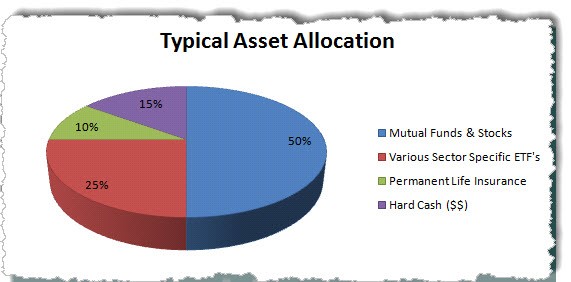Is Whole Life Insurance Really a Good Investment
Post on: 27 Май, 2015 No Comment

by Miranda Marquit
One of the claims you hear from insurance salespeople is that life insurance is an investment. Since a whole life policy builds cash, if you live past the age you feel you need life insurance, you can turn it in to the insurance company, or you can get a life settlement, and walk away with a chunk of cash to use as you wish.
Additionally, the recent financial crisis has many wary of riskier investments in the stock market. With retirement accounts down, many feel life insurance policies that build cash value are a good way to add more stability and safety to an investment portfolio. While this might be true in some cases, it’s important to understand a few fundamental truths about life insurance policies that build cash value.
Safety = Low Returns
One thing to remember about life insurance as an investment is that it offers low returns. A cash-building whole life insurance policy builds cash at a fairly slow rate. You’re guaranteed a return eventually — as long as the insurance company stays in business. You can even borrow against the cash value built up in the policy in some cases. This makes it possible for you to have access to your cash.
However, this safety and access comes with a price: Low returns. In most cases, with basic whole life insurance policies, you will be lucky to beat inflation with the returns. The low returns could mean difficulty meeting your retirement goals if you rely too heavily on a cash policy to help fund your retirement. It’s one thing if you want to invest in life insurance to add security to your portfolio. But you’ll need to add more risk if you want your money to grow at a rate that’ll help pay for retirement. For the most part, investments in life insurance are made by wealthy investors looking for a little more diversity and security.
Increased Return Potential: Equity Indexed Life Insurance
If you’re interested in the possibility of higher returns, while still retaining some of the safety associated with life insurance, it is possible to make use of universal life insurance policies that are equity indexed. An equity indexed universal life policy is one that’s tied to a stock, fund or bond index. Such a life insurance policy comes with two main components:
- Minimum guaranteed rate. Most equity indexed universal life policies have a guaranteed minimum interest rate. This is normally a rather low rate, usually around 2%. Your return is guaranteed at this annual yield, no matter what happens with the markets. It provides some safety.
- Indexed account option. In addition to a minimum guaranteed return, an equity indexed life insurance policy is also connected to the movements of the market. You can choose from among proffered indexes, and link your account so that when the market rises, you benefit. If the market in question falls below your minimum guaranteed return, you don’t lose anything; you simply earn your minimum.
In addition to combining safety with the possibility of better returns, equity indexed universal life insurance policies also often cost less than regular variable life policies. This is because life insurance companies are assuming less of the responsibility for returns. However, it’s important to be aware of the costs and fees associated with some of these equity indexed life insurance policies. You might find your returns eroded.
Using Term Life in Your Investing Strategy
Instead of using permanent life insurance as part of an investing strategy, some choose to use term life as part of an investing strategy. To be more accurate, those who use term life view insurance as just insurance, and want to pay as little as possible. After getting a cheap term life insurance policy, many choose to take the difference between what they would have paid for a more expensive whole life policy and what they pay now, and invest it. This money could be invested in riskier assets that have great growth potential, or they be invested in assets with more moderate growth.
The idea is that it is possible to get a better return for the money by investing in stocks, bonds, funds, currencies or commodities, rather than putting the money into a permanent life insurance policy that offers low returns. In these cases, enough term life insurance is bought to protect the family from financial disaster, and investments are made to help build a nest egg. When the term life insurance expires (usually around retirement for many), it is not renewed, and the assumption is that a rather significant nest egg is available for use.
For many, this proves an effective investment strategy. However, in times of market crashes, there are often difficulties. The value of the assets invested in can decrease to a point where losses are sustained. On top of that, the term life insurance expires, and you receive nothing back (unless you have a special policy that allows refunds a portion of your premiums).
Bottom Line
Everyone’s situation is different. For some, a whole life insurance policy that builds cash value is a good idea. It provides a safe way to earn some returns, providing a safety net to help shore you up during tough economic times. However, at the same time, it is rarely wise to rely entirely on your cash building life insurance policy to fund your retirement. You usually need some riskier investments with higher growth potential. You can consult with a financial or investment professional who can help you plan your finances, and who can help you decide whether life insurance fits into your investment plan.














